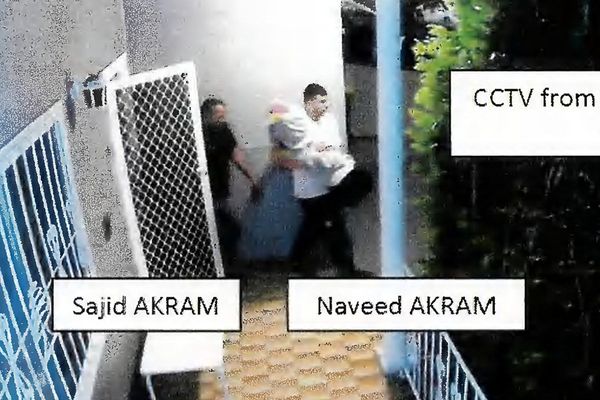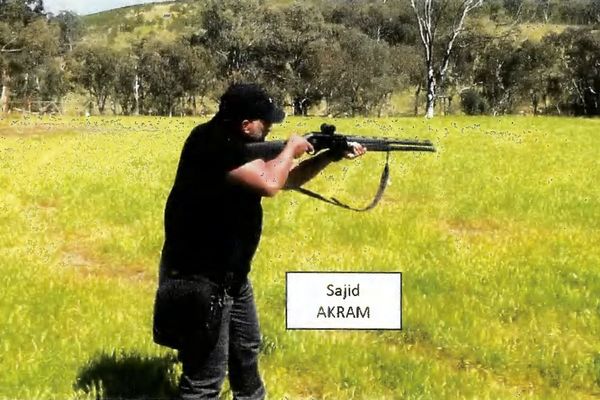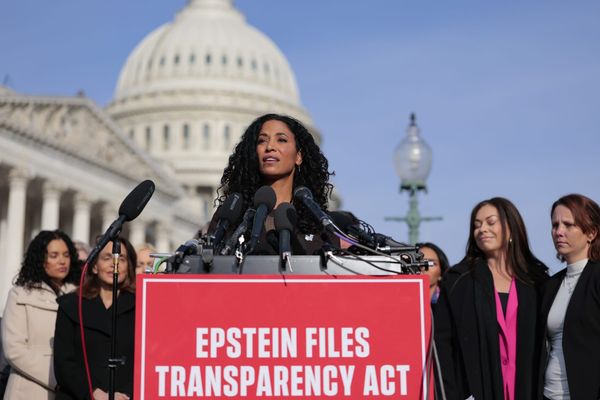
The first two rounds of the U.S. Open have been a slog.
It’s not a complete surprise. Oakmont Country Club is a demanding, 7,400-yard course, and Thursday and Friday are played in threesomes with a 156 players in total. But the pace of play has really dragged out.
Friday morning’s marquee group of Scottie Scheffler, Viktor Hovland and Collin Morikawa needed 71 minutes to complete their first three holes. They finished the second round in five hours and 44 minutes.
That can be attributed to the par-5 12th hole, which at one point had five groups on it.
“It felt long to me,” Scheffler said after a second-round 71. “Both the par-5s, we basically walked up on the group in front of us. When it’s up on No. 8, you’ve got a drivable par-4 on 17. Eight is basically a drivable par-4, too.”
Mid-answer, Scheffler insinuated that he was more agitated about finishing seven back of the lead, instead of how long it took.
“You guys are the ones watching,” the world No. 1 said. “I’m just trying to play. I’ve got too many concerns other than the pace it takes to get around this place.”
Five groups currently on the 12th hole! pic.twitter.com/McElaCWlGW
— Fried Egg Golf (@fried_egg_golf) June 13, 2025
Slow play has become one of golf’s most hot-button topics, and the PGA Tour and LPGA are beginning to implement policies to speed up rounds. The lag doesn’t get under Scheffler’s skin, though.
“Going into a golf course like this with this many players and this tough of a golf course, you know it’s going to take a while,” Scheffler said. “If it was, like—if we’re playing threesomes at [the Travelers Championship] next week, the scores are obviously going to be a bit different. There’s not nearly the distance in between holes. Look at the ground we’ve got to cover out there to walk 18 holes. That’s a big piece of property. It just takes time. It just takes time to hit that many golf shots.”
How does a player navigate that?
“I think the key is just to kind of embrace it, accept it and stay fueled as far as nutrition and eating and drinking enough water to stay hydrated,” said J.J. Spaun, who is one stroke off the lead at 2 under.
Viktor Hovland, meanwhile, is in third place, two back of the lead. And the pace of may have have contributed to that.
“I’d say just personally, when I’ve had a couple bad holes back-to-back, I tend to rush,” said Hovland, who shot a second-round 68. “I tend to really get quick. Out here when the rounds are so long, you can’t really do that. As you said, you have to reset, and yeah, you might have had a bad hole on the last hole and then you're sitting on the tee box for 10, 20 minutes. At least it gives you a good opportunity to get that out of your system and reset and think about the next shot.”
Afternoon conditions exacerbated the situation. Thriston Lawrence, amateur Noah Kent and Thorbjørn Olesen went off at 2:30 p.m., took over three hours to make the turn, and didn’t finish. The horn blew in the fading daylight just after 8:15 p.m. with Lawrence facing a 4-footer for par, sitting four strokes off the lead.
“Just about when I was going to take my putt,” the South African said, “the siren sounded.”
He’s one of 13 players who didn't complete the second round. Only three of them were inside the cut line.
They had to set an early-morning alarm and some had to extend their stay in Pittsburgh an extra day.
It’s not ideal, but if that’s what it takes to win, so be it.
“A bit frustrating in that sense,” Lawrence said, “but those are the rules ... each shot means a lot in a championship like this.”
Lawrence missed that par putt Saturday morning to fall into a tie for sixth at 1 over, four shots behind leader Sam Burns.
But whoever is sitting at the podium holding the trophy Sunday night isn’t going to care how long it took to get there.
“Honestly,” Spaun said, “we play pretty slow on Tour anyway, so what’s another 40 minutes to go around Oakmont?”
This article was originally published on www.si.com as Slow Play is Plaguing the U.S. Open, but the Players Don’t Seem to Mind.







